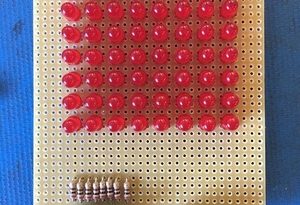Choosing Soldering Flux
Flux is used for cleaning metal surfaces before soldering them together. Because any oxides that remain on a metal surface can result in poor solder connections, the chief function of flux is to deoxidize metal surfaces without decomposing. Solder flux is a vital part of electronic design and repair. Let’s take a look at the different types of flux.
Rosin Flux
Rosin flux is, unsurprisingly, made up primarily of rosin, which is extracted from the sap of pine trees, and contains the active ingredient abietic acid (other acids may be present as well). There are three types of rosin flux — rosin (R), rosin mildly activated (RMA), and rosin activated (RA) — each of which have a different level of activators, the agents enabling the flux to deoxidize and clean.
Rosin flux is used for cleaning already clean surfaces, and has the advantage of leaving no residue behind. Rosin mildly activated flux is used on dirtier surfaces and will leave more residue than ordinary rosin flux; after using rosin mildly activated flux, you use a flux cleaner to cleanse the surface. Rosin activated flux cleans best, but will leave a significant amount of residue behind — because of this, rosin activated flux is rarely used.
Water Soluble Flux
Water soluble flux, also called organic acid flux, is typically made from glycol bases. The downside to using water soluble flux is it often bonds with the circuit board itself or other metal surfaces, and as a result will require thorough cleaning. In addition, water soluble flux tends to be a more aggressive oxidizer than is usually required. Organic flux is more reactive than rosin activated flux and is thus a stronger cleaner. (Note: You can also find inorganic water soluble flux, which is even more powerful than water soluble flux.)
No-Clean Flux
No-clean flux is a mixture of organic resins — aside from rosin — mixed with certain inorganic agents. The behaviors and properties of no-clean fluxes can vary significantly depending on their respective chemical composition; for example, some no-clean fluxes leave a tremendous amount of residue, which is unattractive, though it is no threat to the surface. You can, however, find no-clean fluxes that won’t leave residue behind. The main advantage of using a no-clean flux is that you won’t need to clean the surface after soldering, because they do not affect electrical conductivity.
